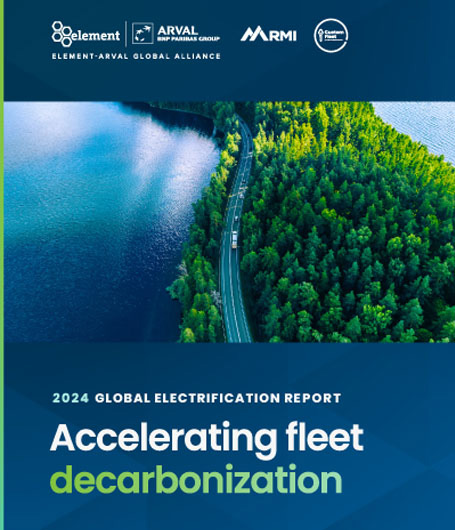13 January 2025
How EV’s can reduce lifecycle emissions and lower costs
Insights from our Accelerating Fleet Decarbonisation report
Beyond eliminating tailpipe emissions, electric vehicles (EVs) now offer significantly lower lifecycle emissions compared to internal combustion engine (ICE) vehicles.

According to the International Council on Clean Transportation (ICCT), battery electric vehicles (BEVs) in key regions like Europe, China, and the U.S. generate about two-thirds fewer lifecycle emissions than their ICE counterparts. This includes emissions from vehicle manufacturing, fuel production, and usage.
As more electricity is produced from renewable sources, this gap will widen, making EVs even more environmentally friendly.
A major driver of EV adoption is lower operating costs
EVs rely on electricity, which is generally cheaper and less volatile in price than gasoline or diesel.
Additionally, EVs are more efficient at converting energy into motion, leading to lower fuelling costs. This efficiency results in long-term savings for both fleet operators and individual owners.
EVs outperform traditional ICE vehicles in maintenance costs
With fewer moving parts, EVs don’t require regular oil changes or emissions checks, leading to lower maintenance costs.
Research from the Electric Automotive Group Alliance (EAGA) found that sales-oriented sedans in European fleets required 40% less maintenance spending than their ICE counterparts.
However, EVs may require more significant repairs or battery replacements as they approach the end of their lifecycle.
To fully capitalise on these benefits, EAGA, in collaboration with the Rocky Mountain Institute (RMI), assessed the total cost of ownership (TCO) and environmental advantages of EVs in their fleets.
This analysis examined fuel efficiency and national emissions factors, revealing that many EAGA fleets achieved over 90% lower tailpipe emissions by switching to EVs.
Transitioning to EVs offers more than just zero emissions on the road
The combination of reduced lifecycle emissions, lower fuelling costs, and decreased maintenance expenses makes EVs an economically sound and environmentally sustainable choice for both fleet managers and individual consumers.
As cleaner electricity grids expand, the case for EV adoption will grow even stronger, contributing to significant cost savings and reduced global greenhouse gas emissions.
Download the report for more insights
The 2024 Accelerating Fleet Decarbonisation report, produced by the Element-Arval Global Alliance, in collaboration with RMI offers global insights into fleet electrification.
You can also download the AU/NZ regional snapshot for key local insights (1MB, PDF)
Ready to electrify your fleet?
Get in touch with us today to discuss a strategic approach to transitioning your fleet towards a sustainable future.


